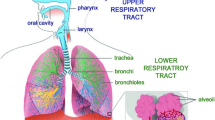Abstract
A model is described for use in translating measured heat flux to predict second and third degree hand burn injury in fire exposures. The model adapts a burn translation algorithm for estimating burn injuries used in established instrumented fire test manikin technologies. It facilitates more accurate prediction of burns to human hands by accounting for the cylindrical geometry of the fingers, bone tissue beneath the skin, and different skin thickness data that represents the different areas of the hand. A numerical modeling approach is used to demonstrate the response of the skin burn model for predicting hand burn injury in heat exposures encountered in fire manikin testing.









Similar content being viewed by others
References
Hummel A, Barker R, Lyons K, Deaton AS, Morton-Aslanis J (2011) Development of instrumented manikin hands for characterizing the thermal protective performance of gloves in flash fire exposures. Fire Technol 47(3):615–629
ASTM F 1930 (2011) Standard Test method for evaluation of flame resistant clothing for protection against flash fire simulations using an instrumented manikin. American Society for Testing and Materials, West Conshohocken
Henriques Jr FC (1947) Studies of thermal injuries V. The predictability and significance of thermally induced rate processes leading to irreversible epidermal injury. Arch Pathol 43:489–502
Incropera FP, DeWitt DP (1996) Fundamentals of heat and mass transfer, 4th edn. Wiley, New York
Fausett LV (2003) Numerical methods: algorithms and applications. Pearson Education, Inc., Upper Saddle River
Torvi DA (1997) Heat transfer in thin fibrous materials under high heat flux conditions. PhD Dissertation, University of Alberta
Moler C (2009) MatLab, Computer Software, MathWorks Inc., Version 7.8
Stoll AM, Greene LC (1959) Relationship between pain and tissue damage due to thermal radiation. J Appl Physiol 14(3):373–382
Lee Y, Hwang K (2002) Skin thickness of Korean adults. Surg Radiol Anat 24(3–4):183–189
Petrofsky JS, Prowse M, Lohman E (2008) The influence of ageing and diabetes on skin and subcutaneous fat thickness in different regions of the body. J Appl Res 8(1):55–61
Whitton JT, Everall JD (1973) Thickness of epidermis. Br J Dermatol 89(5):467–476
Hoffman K, Stucker M, Dirshka T (1994) Twenty MHz B-scan sonography for visualization and skin thickness measurement of human skin. J Eur Acad Dermatol Venereol 3:302–313
Olsen LO, Takiwaki H, Serup J (1995) High-frequency ultrasound characterization of normal skin. skin thickness and echographic density of 22 anatomical sites. Skin Res Technol 1:74–80
Southwood WF (1955) The thickness of the skin. Plast Reconstr Surg 15(5):423–429
Hayward MG, Keatinge WR (1981) Roles of subcutaneous fat and thermoregulatory reflexes in determining ability to stabilize body-temperature in water. J Physiol Lond 320(NOV):229–251
Biyikli S, Modest MF, Tarr R (1986) Measurements of thermal properties for human femora. J Biomed Mater Res 20:1335–1345
Acknowledgments
This research was funded by U. S. Army PM-SPIE, Contract Number W911QY-10-C-0106 and the authors are very grateful for their support.
Author information
Authors and Affiliations
Corresponding author
Rights and permissions
About this article
Cite this article
Hummel, A., Barker, R. & Lyons, K. Skin Burn Translation Model for Evaluating Hand Protection in Flash Fire Exposures. Fire Technol 50, 1285–1299 (2014). https://doi.org/10.1007/s10694-013-0336-7
Received:
Accepted:
Published:
Issue Date:
DOI: https://doi.org/10.1007/s10694-013-0336-7




